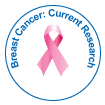当社グループは 3,000 以上の世界的なカンファレンスシリーズ 米国、ヨーロッパ、世界中で毎年イベントが開催されます。 1,000 のより科学的な学会からの支援を受けたアジア および 700 以上の オープン アクセスを発行ジャーナルには 50,000 人以上の著名人が掲載されており、科学者が編集委員として名高い
。オープンアクセスジャーナルはより多くの読者と引用を獲得
700 ジャーナル と 15,000,000 人の読者 各ジャーナルは 25,000 人以上の読者を獲得
インデックス付き
- レフシーク
- ハムダード大学
- エブスコ アリゾナ州
- パブロン
- ICMJE
役立つリンク
オープンアクセスジャーナル
このページをシェアする
抽象的な
Comparison of novel, Bach Mai Boston tool (BBT) and The patientgenerated subjective global assessment (PG-SGA) for oncology inpatients
Hoa Nguyen Thi Thanh
Background: Oncology inpatients are at high risk of malnutrition. Identification of at risk patients by nutrition screening requires a practical and easy to use tool. Purpose: The aim of this study was to determine the validity of the Bach Mai Boston Tool (BBT) and compared to a ‘gold standard’ full nutrition assessment using the Patient-Generated Subjective Global Assessment (PG-SGA). Methods: A cross-sectional study was conducted on 270 oncology inpatients from January to December 2016. Cohen’s Kappa, sensitivity, specificity and ROC analyses were performed. Results: 270 inpatients were included in the study with the mean age of 56.3 ± 12.1 years old. Of them, 51.8% were male and 74.1% had gastrointestinal cancer. The mean body mass index of patients was 20.6 ± 3.0 kg/m2. The PG-SGA tool identified 146 (54.1%) malnourished patients, while BBT identified 105 (39.9%) ones. The BBT had the medium consistency, with the Kappa = 0.6. Using the cut-off point ≥ 4, the BBT resulted in a sensitivity of 87.7% and a specificity of 72.6%. On the other hand, BBT with the cut-off point ≥ 5 resulted in 67.1% of sensitivity and 94.4% of specificity, AUC = 0.81. Conclusion: The BBT is a practical, informative and valid tool for detecting malnutrition in oncology hospitalized patients. We would recommend using the cut-off point of 4 for screening the risk of malnutrition for oncology inpatients

 English
English  Spanish
Spanish  Chinese
Chinese  Russian
Russian  German
German  French
French  Portuguese
Portuguese  Hindi
Hindi